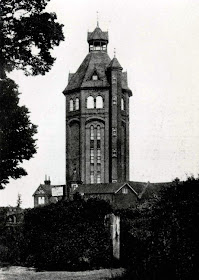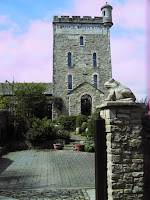
BWTAS member
Clare Johnson has passed along her correspondence with her acquaintance Mark Stevenson of Crouch End.
Hearing of Clare's interest in water towers, Mark sent these images of a
hyperboloid steel lattice water tower he encountered in the ancient city of Bukhara in Uzbekistan.
Mark was on a month long trip along the ancient Silk Road timed to coincide with the solar eclipse in
Shanghai in July earlier this year. As far as he knows, the water tower was built by the Russians in 1927.
Leave it to the indomitable Ferrers,
the Pie Master, to do some digging and he will locate it at 39.777891ºN 64.408638ºE and discover that you can climb it.
According to Lonely Planet, for a few pence given to whichever local is guarding the gate that day, you can climb the rickety and rusting stairs and gain fantastic views of the city, especially the ancient fortified palace of the
The Ark.

Digging further, Ferrers found an image from 1963 taken by traveller
Galen Fry Singer which show pretty conclusively that the original tank has been removed and this tower was converted into a viewing platform. The later Islamic detailing of the window arches in the conversion are a nod to the history and culture of this ancient city.
What is fascinating is that this hyperboloid structure is a Russian invention and the first was designed by engineer
V.G. Shukhov in 1896.
The world's first hyperboloid tower was another water tower and this is now in desperate need of preservation today. There is a foundation dedicated to the many works of this remarkable engineer.
 |
1896 tower for All-Russia Exhibition at
Nizhniy Novgorod, capacity 114,000 gallons
|
It isn't the first time that the challenges of water storage have inspired huge breakthroughs in engineering, reinforced concrete being another.

And wrapping these two things up together nicely, in Trent Park, Cockfosters, England, we have a reinforced concrete hyperboloid water tower designed by Edmund Percey and Chief Engineer J M Milne for Severn Trent water.
The hyperboloid structure is probably best known for creating the shape of cooling towers in power stations. The amazing illusion of this geometry is that the members of these structures remain straight and do not curve, but at Cockfosters, twist 120 degrees around their axis.
There are many water towers, bridges and other structures using this technique. Put the term into google and see what else you will find!
I wonder if Winchells or Krispy Kreme doughnuts know of this amazing tower in Ciechanow, Poland. A toroid tank on a hyperboloid lattice. Try saying that with a mouthful of crackers!









































